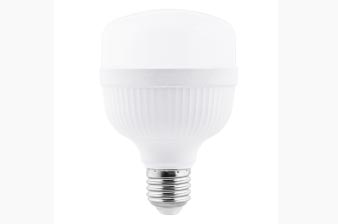
How do I know which LED bulb to buy?
1. Purpose and Placement
Determine the intended use: Consider where you will use the bulb (e.g., living room, kitchen, bathroom, outdoor).
Consider the fixture: Ensure the bulb is compatible with the fixture type (e.g., table lamp, ceiling light, recessed lighting).
2. Brightness (Lumens)
Understand lumens: Lumens measure the bulb's brightness. The higher the lumens, the brighter the light.
Match lumens to your needs:
450 lumens: Equivalent to a 40W incandescent bulb, suitable for accent lighting.
800 lumens: Equivalent to a 60W incandescent bulb, ideal for general lighting.
1100 lumens: Equivalent to a 75W incandescent bulb, good for task lighting.
1600 lumens: Equivalent to a 100W incandescent bulb, suitable for areas needing a lot of light.
3. Color Temperature (Kelvin)
Warm White (2700K-3000K): Provides a cozy, yellowish light, ideal for living rooms and bedrooms.
Cool White (3500K-4100K): Offers a neutral white light, suitable for kitchens and workspaces.
Daylight (5000K-6500K): Emits a bluish light, best for reading areas, basements, and areas requiring high visibility.
4. Energy Efficiency
Check the wattage: LED bulbs use significantly less power than incandescent bulbs. Look for low wattage with high lumen output.
Energy Star rating: Opt for bulbs with the Energy Star label for verified energy efficiency and performance.
Compatibility: If you need a dimmable bulb, ensure it is compatible with your existing dimmer switch. Some LEDs may require specific types of dimmers.
6. Color Rendering Index (CRI)
High CRI (80-90+): Indicates better color accuracy. This is important for areas where color appearance is crucial (e.g., bathrooms, art studios).
7. Shape and Size
Check the bulb shape: Common shapes include A-line (standard), BR (reflector), MR (multifaceted reflector), and PAR (parabolic aluminized reflector).
Fit the fixture: Ensure the bulb fits in the fixture. Measure the fixture if necessary to avoid bulbs that are too large or too small.
8. Smart Features
Smart bulbs: Consider bulbs that can be controlled via smartphone apps or voice assistants if you want features like remote control, color changing, or automation.
9. Lifespan and Warranty
Lifespan: LED bulbs typically last 15,000 to 25,000 hours. Check the packaging for estimated lifespan.
Warranty: A good warranty (usually 3-5 years) can be a sign of quality and provide peace of mind.
10. Price
Initial cost vs. long-term savings: While LEDs might have a higher upfront cost, they save money over time through lower energy bills and fewer replacements.
By considering these factors, you can select an LED bulb that meets your needs and provides optimal performance and energy savings.
Can LED bulbs be used in any light fixture?
What is the LED bulb equivalent to 60 watt?
What LED bulb replaces 100 watt?
Are LED bulbs worth the money?
Are LED bulbs cheaper on electricity?
What are the three types of LED light bulbs?
Why are LED light bulbs better?
Can LED bulbs be used in any light fixture?
What is the difference between LED and normal bulbs?
What is LED light bulb used for?

